In my last post discussed the little known, but very important Suez Crisis of 1956. Click below if you missed it.
This time I will go back to the format of Part VI, where I quickly outline important events that occurred between 1956 and the build-up to the Six Day War in the summer of 1967.
1956
April 11 1956: Arab infiltrators entered a synagogue in the village Shafir and opened fire. At the time, the synagogue was playing host to a group of 46 children aged 9–16. Three children and an instructor were killed and five children were seriously wounded.
August 16 1956: An Israeli bus was ambushed by a Fedayeen squad. Four passengers were killed and three wounded during the attack.
September 3 1956: Near kibbutz Ramat Rachel, Arab militants opened fire and kill four archaeologists, wounding sixteen others.
September 12 1956: An Arab Fedayeen squad stabbed three Druze guardsmen to death in the Ein Ofarim oil drilling facility near the village Hatzeva.
Also occurring on September 12, the IDF conducted Operation Jonathon a reprisal attack against the Khirbet al Rahwa police station 25 Jordanian soldiers and policemen were killed in the raid. Operation Jonathon was in response to an attack by the Arab Legion against IDF troops training in Beit Govrin, in which eight Atuda (Academic Reserve) medical students were killed.
September 13 1956: The IDF conducted Operation Gulliver, an operation in Jordan in which a small paratroop force stormed the fort at Gharandal, killing at least 9 policemen and members of the Jordanian camel Corps. One Israeli was killed and twelve were wounded.
September 25: Following the killing of four archaeologists and the murder of two farmers in kibbutz Maoz Haim, the IDF launches Operation Lulav, an attack against the police station in Husan, near Bethlehem. Thirty-seven Legionnaires and National Guardsmen were killed as well as two civilians. Nine IDF members were also killed.
October 4 1956: A squad of ten Arab militants, who infiltrated into Israel from Jordan, ambush and kill five Israeli construction workers in Sdom.
October 9 1956 – Arab militants, who infiltrated into Israel from Jordan, kill two Israeli workers and cut off their ears in an orchard near the Israeli youth village of Neve Hadassah.
October 10 1956: Following the constant infiltrations from the Jordanian–control West Bank, the IDF attack the police station in Qalqilva. Named Operation Samaria, it kills 100 Jordanian police along with 17 IDF soldiers.
October 29 1956: Israeli Border Police kill 48 Arab civilians for unknowingly disobeying curfew orders imposed by the IDF. It became known as the Kafr Qasim Massacre.
1957
January 5 1957: The trial of eleven Israel Border Police Officers, for their actions in the Kafr Qasim massacre. Eight of the eleven officers were found guilty and sentenced to prison.
January 18 1957: Two students, Gideon Hollin and Shifra Rabinowitz, go missing near Jerusalem. The two were captured by Jordanian soldiers when they accidentally crossed the border. Rabinowitz were returned to Israel on January 28 and Hollin was returned on March 5.
January 22 1957: Israel withdraws from the Sinai Peninsula which had been captured from Egypt during the Suez Crisis but kept troops along the eastern shore of the peninsula and in the Gaza Strip.
March 4 1957: Just past midnight, Israel Kastner, a man who had saved 1,684 Jews from Auschwitz, but was also accused of collaboration with the Nazis, is shot outside his house. A three man team from the terrorist group Lehi shot Kastner for the dealings he has with the SS in World War II. The three Lehi members were caught and given life sentences.
March 7 1957: The Israeli army withdraws from the Gaza Strip.
March 24 1957: The bodies of four teens, that had gone missing on March 18, are returned to Israel. They had attempted to walk to Petra, but somewhere along the way they were killed by Jordanian Bedouins.
June 20 1957: Teenager Margalit Shimoni is returned from Jordan after 80 days in captivity. Shimoni went missing on April 1 near kibbutz Lahav. She had been captured by the Jordanian Army when she stormed off after an argument with her boyfriend and accidently crossed the border.
June 24 1957: A Syrian army patrol attacks kibbutz Gadot and kills a Israeli woman.
July 9 1957: One Israeli civilian is killed and seven Israeli Border Police are wounded, when the Syrian Army attacks kibbutz Gone.
July 22 1957: The Danish vessel Brigitte Toft is stopped just before entering the Suez canal. When the Egyptians search the vessel they find Israeli journalist Rafi Ayalon on board. Even though he is listed as a crew member, Ayalon is arrested and held until August 18.
September 12: Israel's flag carrier El Al, buys it's first purpose built passenger airplane, the Bristol Britannia. Up until this time El Al had been using repurposed military transport aircraft.
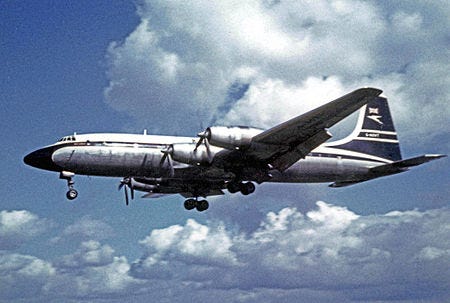
September 17 1957: 15 Arab children from the village of Sandala, are killed while playing with an unexploded mortar shell, left over from the 1948 war.
October 29 1957: A 26 year old Syrian Jew, Moshe Dwek, disgruntled, because of his inability to get Social Security, throws a hand grenade in the Knesset. The explosion, severely injures Minister of Religious Affairs Haim-Moshe Shapira. Prime Minister David Ben-Gurion, the actual target, Foreign Minister Golda Meir and Minister of Transportation Moshe Carmel were also wounded. Dwek was arrested, tried, convicted and sentenced to 15 years in prison for attempted murder.
November 25: In a replay of the March 4, incident, the bodies of two teens are return to Israel. Mordecai Tubi and Amiram Shai, had tried to walk to Petra and were killed by by Jordanian soldiers during the journey.
In November and December 1957, four Israeli civilians were killed and a dozen more were wounded in four separate incidents with the Syrian Army.
Throughout 1957 four Israelis were killed and three wounded in four separate incidents involving land mines. All these mines were left over from the 1948 war.
1958
January 8 1958: Four Egyptian MiG-17 jets penetrated Israeli airspace near Beersheba before being driven off by Israeli fighters.
February 11 1958: Arab militants killed a resident of moshav Yanuv.
February 21 1958: A plebiscite was held, with Egyptians and Syrians voting to join in a political union called the United Arab Republic (UAR) Gamel Abdel Nasser was declared the new president of the UAR.
April 1 1958: The “Night of the Ducks” scandal: A surprise Israeli military exercise to test the mobilization of IDF reserves, causes panic throughout Israel and puts the armies of the neighboring Arab states on high alert.
April 5 1958: Arab militants lying in an ambush shot and killed two Israeli civilians near Tel Lakhish.
April 22 1958: Jordanian soldiers shot and killed two Israeli fishermen in the Gulf of Aqaba.
May 26 1958: Arab militants killed four Israeli police officers at Mount Scopus.
July 9 1958: In Haifa, police confronted a Wadi Salib resident, Yaakov Elkarif, who was drunk and disturbing the peace. When he began behaving erratically and hurling empty bottles at the police sent to arrest him, he was shot and seriously wounded. Residents surrounded the police vehicle and dragged an officer out of it, he was released only after shots were fired in the air. Conflicting testimonies arose from the event. One witness claimed Elkarif provoked the officer through threats. Another witness offered that the police viewed Elkarif, as a stereotypical Moroccan immigrant, violent and hot-tempered, and he was shot for his lack of standing in society. After rumors circulated that he had died, several hundred Wadi Salib residents marched to Hadar HaCarmel, a predominantly Ashkenazi (European Jews) district, smashing shop windows and setting cars on fire. Back in Wadi Salib, the angry demonstrators targeted the headquarters of the Mapai, Israel's ruling party and the offices of the Israeli Congress of Trade Unions, the Histadrut. The police tried to disperse the demonstrators by force, leaving 13 police and 2 demonstrators wounded. By July 11, riots broke out in other locations in Israel, particularly in large communities of North African Jews (Maghrebi Jews), like Tiberias and Beersheba. There were claims that the riots were not completely spontaneous, the Likud Yotsei Tsfon Africa (Union of North African Immigrants) was thought to be involved in planning them. David Ben-Haroush, one of the movement's founders, was sent to prison. Ben-Haroush ran for election while incarcerated.
July 10 1958: A memorial for Frank Foley (1884–1958) was dedicated in the form of a forest planted in the desert. As a Passport Control Officer in Britain's embassy in Berlin. Foley flouted strict rules in order to help as many as 10,000 German Jews to leave the country.
November 17 1958: Syrian militants killed the wife of the British air attaché, who was staying at the guesthouse of the Italian Convent on the Mount of Beatitudes.
November 4 1958: Six Israeli Dassault Super Mystère and four Egyptian MiG-17s clashed in a dogfight near the border between the two nations. All planes reportedly returned safely and the battle did not lead to further action.
December 3 1958: Arab militants killed a shepherd at kibbutz Gone, in the second attack on the kibbutz in a little over a year.
1960
January 31 1960: In the first Israeli retribution operation since the Suez Crisis, units from the Golani Brigade attack the Syrian village of Tawfiq. The IDF had designated the village as the staging area for many Syrian attacks in the region. The IDF seizes the village under heavy Syrian artillery fire and destroy every house. Six Syrian and three Israeli soldiers are killed and seven Israelis are wounded during the operation.
February 15 1960: Rising tensions along the Israeli–Syrian border prompted Nasser to deploy Egyptian armed forces in northern Sinai near the village of Rotem. Only on February 15, six days after troop movements had begun, did Israel learn of the presence of an Egyptian force of 500 tanks, on its undefended southern border. Caught off-guard, Israel scrambled to deploy its own forces, while Ben-Gurion adopted a policy of pacification to ease tensions and prevent the outbreak of hostilities. Both sides eventually stood down, yet each drew different conclusions from the affair. Israeli national defense policy came to see any mass deployment of Egyptian forces on its border as unacceptable, and believed new rules had been set in place. Egypt, however, viewed the crisis as a great success. Egypt believed the deployment had prevented an Israeli attack on Syria, and it was thus possible to deter Israel with the mere deployment of forces, without the danger of going to war. The crisis was to have a direct effect on both sides during the events of May 1967, which eventually led to the Six-Day War.
14 March – West German Chancellor Konrad Adenauer met with Israeli Prime Minister David Ben-Gurion at the Waldorf-Astoria Hotel in New York City. This was the first time a German leader had conferred with a leader of the Jewish state. Two weeks earlier, the two countries had secretly negotiated German financial and military aid to Israel.
21 March – In Buenos Aires Argentina, Ricardo Klement returned home with a bouquet of flowers for his wife. This confirmed to Mossad agents that the Argentine businessman was, in fact, Adolf Eichmann. Mossad agents knew that Eichmann’s wedding anniversary was March 21 1935. The architect of Germany's "Final Solution", Eichmann had eluded capture after World War II and had been in hiding for 15 years.
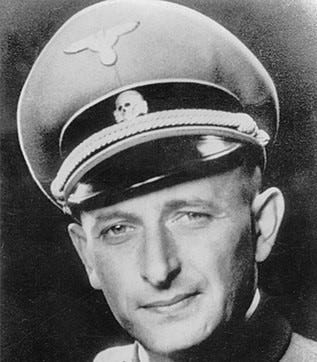
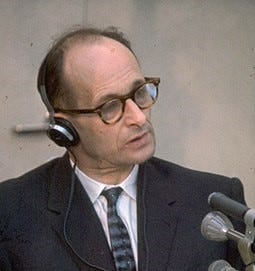
May 11 1960: After receiving the go-ahead from David Ben-Gurion, four Mossad agents abduct Adolf Eichmann off the street in front of his home. There had been debate behind the scenes if the Mossad should just kill Eichmann, but Ben-Gurion was adamant that he should be returned to Israel for trial.
May 22 1960: Eleven days after being snatched off the street in Buenos Aires by Mossad agents, Adolf Eichmann arrives in Tel Aviv.
May 23 1960: At 4:00 PM, David Ben-Gurion surprises the Knesset with the announcement that, "Israeli Security Services captured one of the greatest Nazi criminals, Adolf Eichmann… Eichmann is already in detention in Israel and will soon be put on trial for crimes against humanity.”
June 3 1960: Argentina demands that Israel return Adolf Eichmann and ask for reparations for Eichmann's seizure by Mossad agents in Buenos Aires. Their requests are denied.
July 20 1960: Czech-born scientist Kurt Sitte, the head of the physics Department at the Israel Institute of Technology (Technion) is arrested on charges of espionage for passing secrets to the Soviet Union. An Israeli court believes his statement that he passed the secrets because he was trying to protect his mother and sister, still living in Czechoslovakia. He is sentenced to five years in prison.
August 2 1960: The dispute between Israel and Argentina over the kidnapping of Adolf Eichmann is resolved. Israel will keep Eichmann but admitted that their operation was a violation of Argentina’s rights.
1961
April 11 1961: The trial of Adolf Eichmann begins in Jerusalem. He was indicted on 15 charges, including crimes against humanity, crimes against the Jewish people and membership in an outlawed organization. The trial is broadcast internationally on both television and radio, and creates huge international interest.
May 22 1961: The 1960 Census shows that there are 2,179,491 inhabitants in Israel.
June 20 1961: Ten weeks into his war crimes trial, Adolf Eichmann takes the witness stand in his own defense, but refused to swear on the Bible.
August 14 1961: After 73 days the trial of Adolf Eichmann ends and the three judge panel begins deliberations.
September 28 1961: A coup by disgruntled Army officers in Syria, resulted in the break-up of the United Arab Republic and the restoration of an independent Syrian Republic.
November 28 1961: After Morocco’s King Hassan II agrees to allow the Jewish minority to leave the country, the first group of 105 Jews fly to Israel. By the end of the year, 11,478 had left, and over the next two years, 85,000 will emigrate.
December 11 1961: Adolf Eichmann is convicted of most of the charges against him. Four days later the three judge panel sentences him to death, for his part in the Holocaust.
1962
March 16 1962: Following a series of Syrian attacks on Israeli fisherman on the Sea of Galilee, the IDF launches Operation Swallow, a raid on Syrian outposts in the village of Nokyeab. 30 Syrian and seven Israeli soldiers are killed.
March 22 1962: Adolf Eichmann appeals his death sentence.
May 29 1962: Eichmann’s appeal is rejected by the Supreme Court of Israel. Eichmann’s lawyer immediately asks Israeli President Yitzhak Ben-Zvi for clemency or at a minimum, a commutation of his sentence to life in prison without parole.
May 31 1962: After Israeli President Yitzhak Ben-Zvi refuses to either commute his sentence or grant clemency, Nazi war criminal Adolf Eichmann is hanged.
1963
June 16 1963: For what are described as personal reasons, David Ben-Gurion resigns as Prime Minister. He names Levi Eshkol as his successor.
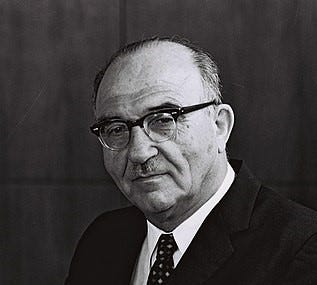
1964
January 1 1964: Yitzhak Rabin is appointed as the seventh Chief of Staff of the IDF.
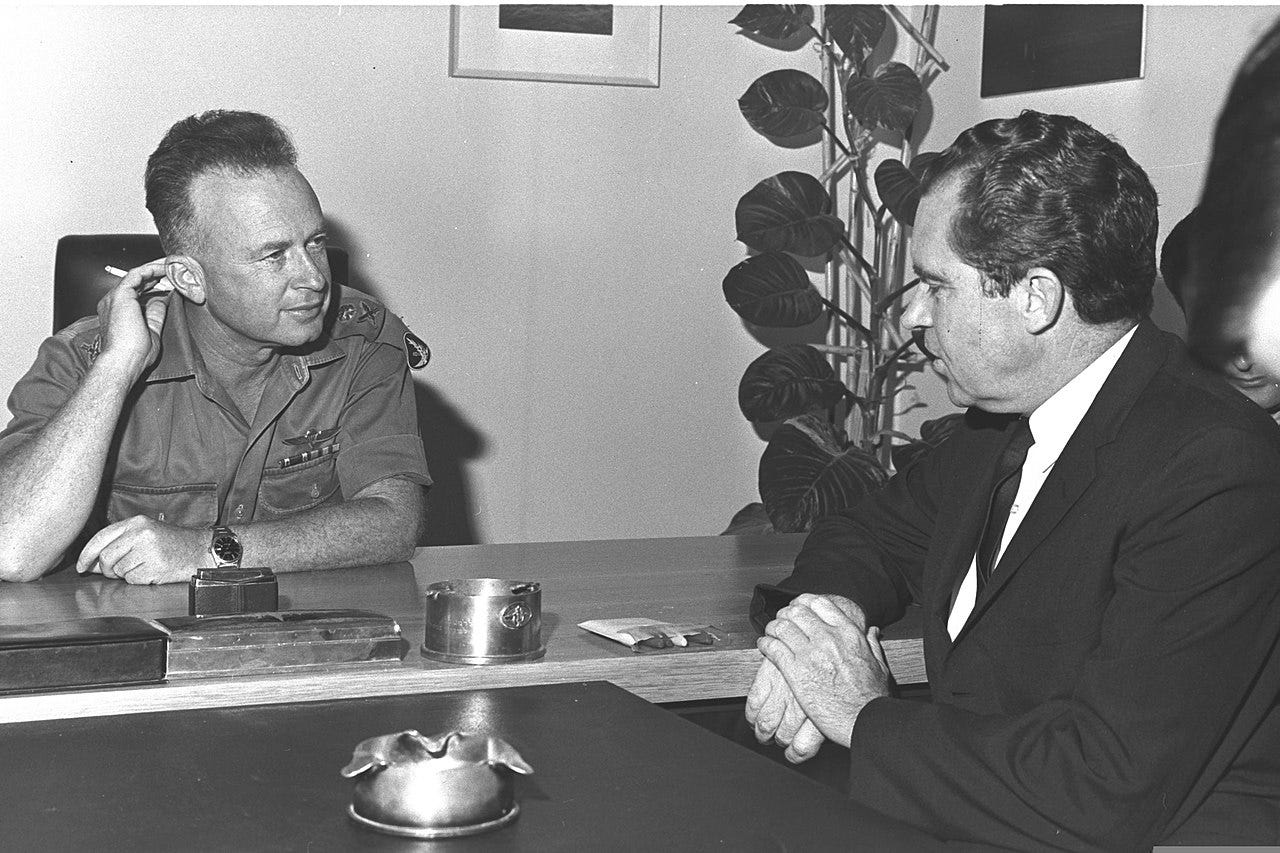
January 5 1964: Pope Paul VI arrives in Israel, marking the first visit to Israel by the head of the Roman Catholic Church.
June 2 1964: The Palestine Liberation Organization is founded, with the stated goal of the "liberation of Palestine through armed struggle. The PLO Charter, states that "Palestine with its boundaries that existed at the time of the British Mandate is an integral regional unit" and seek to "prohibit the existence and activity of Zionism”. It also called for the right of return and self-determination for all Palestinian Arabs, which it describes as “any Arab (regardless of religion) living in the British Mandate before 1947 and any descendant thereof”.
1965
January 1 1965: The first major guerrilla attack from Fatah (A branch of the PLO founded by Yasser Arafat) takes place when Fatah members attempt to sabotage the National Water Carrier (the system that moves water from the Sea of Galilee to the southern portions of the country, NWC). The squad manages to put an explosive device next to a portion of the NWC, but it fails to explode and is later discovered by an Israeli Border Police patrol.
January 21 1965: The Shalom Meir Tower opens, it is the tallest building in the Middle East at the time at 466 feet.
January 24 1965: Syria announces that it has captured the Israeli spy Eli Cohen. Cohen who had been living in Damascus as Syrian businessman Kamel Amin Thaabet, had been passing Syrian military and political information to his Mossad handlers for four years before he was discovered.
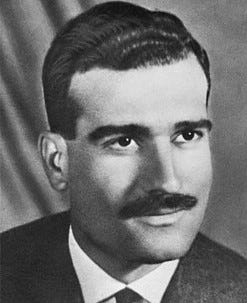
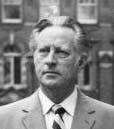
March 7 1965: Wolfgang Lotz, who had been spying for Mossad for six years is captured by the Mukhabarat (Egyptian intelligence agency). Because he is thought by the Egyptians to be a German national he is not executed but sentenced to life in prison. He will be exchanged for Egyptian prisoners after the Six Day War.
March 1965: Israel and West Germany establish diplomatic relations, 20 years after the fall of Nazi Germany.
May 11 1965: The Israel Museum, an art and archaeological museum and foremost cultural institution is opened in Jerusalem. Its holdings include the world's most comprehensive collections of the archaeology of the Holy Land, and Jewish art and life, as well as significant and extensive holdings in the fine arts, encompassing Israeli art, European art, modern art, contemporary art, Asian art, African art as well as the Shrine of the Book, which houses the Dead Sea Scrolls and artifacts discovered at Masada.
May 18 1965: Israeli spy Eli Cohen is hanged in Syria. Syrian officials have always refused to return Cohen’s body to Israel and has stated that they have reburied the body multiple times to prevent it from being recovered in an Israeli special operation.
July 14 1965: The Israeli left-wing political party Rafi, is founded by David Ben-Gurion Moshe Dayan, Shimon Peres, Chaim Herzog and Teddy Kollek. After their break with the ruling Mapai party.
1966
February 28 1966: Israeli peace activist Abie Nathan flies his private plane to Egypt, landing in Port Said. He is arrested when he lands and asks to meet Egyptian President Gamal Abdel Nasser to deliver a petition calling for peace between Israel and Egypt. His request is denied and he is deported back to Israel.
March 24 1966: Israeli Educational Television begins broadcasting.
May 16 1966: Two Israelis were killed when their car north of the Sea of Galilee hit a mine. It was never discovered who planted the mine but tracks in the area led into Syria.
August 16 1966: In Operation Diamond, Iraqi fighter pilot Munir Redfa, an Assyrian Christian defects with an Iraqi Air Force MiG-21, flying into Hatzor Air Base in central Israel, in what is considered one of the Mossad’s most successful operations. Redfa's entire extended family was smuggled safely out of Iraq to Israel and he was given one million dollars for the effort. The MiG-21 was evaluated by the Israeli Air Force and was later loaned to the United States for testing and intelligence analysis, under the project name “Have Doughnut”. Knowledge obtained from analysis of the aircraft was instrumental to the successes achieved by the Israeli Air Force in its future encounters with Arab MiG-21s and ultimately led to the foundation of the Top Gun program in the US.

August 30 1966: After meeting in a building that had been home to a bakery and shops since 1950, the Knesset building is inaugurated. The Knesset compound sits on a hilltop in western Jerusalem in the Givat Ram district near the Jerusalem Museum. The main building was financed by James de Rothschild as a gift to the State of Israel in his will.
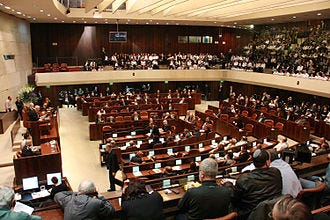
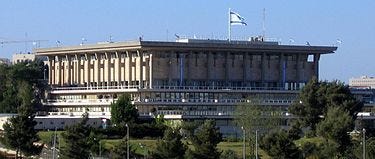
October 4 1966: Israel applies for the affiliate membership of the European Economic Community, the forerunner of the European Union.
November 8 1966: The state of martial law imposed on Israeli Arabs since 1948 is completely lifted and all Arab citizens are granted the same rights as Jewish citizens under law.
November 13 1966: In the summer and autumn of 1966 the PLO carried out several guerrilla attacks that caused deaths and injuries to Israeli civilians and military personnel. This culminated on November 11 1966, when an Israeli border patrol hit a land mine, killing three soldiers and injuring six others. Israel believed the mine had been planted by militants from al-Samu, a village in the southern West Bank, close to where the incident took place, and a Fatah stronghold. On Friday, November 12, King Hussein of Jordan penned a letter of personal condolence to Israel which he gave to the US embassy in Amman to be cabled to U.S. ambassador to Israel, Walworth Barbour (There was no direct line of communication between Israel and Jordan). However, Barbour believed that it was not an urgent message and he left it on his desk over the weekend. It was not delivered to Levi Eshkol until Monday. Meanwhile, the Israeli cabinet approved a large scale intervention called Operation Shredder. On the 13th a force of 3,500 Israeli troops supported by tanks and air cover descend on al-Samu and two smaller villages nearby and destroyed 50 houses. In a stroke of bad luck for the Israelis a nearby Jordanian battalion stumbled across the operation and after being confronted by the much larger force called for air cover. By the end of the fighting, one Jordanian plane had been shot down, three Jordanian civilians and 16 soldiers were killed, 54 soldiers and 96 civilians were wounded. The Israelis suffered one killed and ten wounded.
The United Nations Security Council adopted Resolution 228, unanimously deploring "the loss of life and heavy damage to property resulting from the action of the Government of Israel on 13 November 1966", censuring "Israel for conducting a large-scale and carefully planned military action against Jordanian territory. In violation of the United Nations Charter and of the General Armistice Agreement between Israel and Jordan" and emphasizing to Israel that “actions of military reprisal cannot be tolerated and that, if they are repeated, the Security Council will have to consider further and more effective steps as envisaged in the Charter to ensure against the repetition of such acts."
December 10 1966: Shmuel Yosef Agnon receives the Nobel Prize in Literature, becoming the first Israeli Nobel laureate.
1967
April 7 1967: A minor incident between the Israeli and Syrian air forces, escalates into a full-scale aerial battle over the Golan Heights. Israel claimed it downed six Syrian MiG-21s and Syria claimed it shot down five Israeli Mirages and killed 70 Israelis.
We have now covered all the major events in the history of Israel from 1956 to the build-up to the Six Day War. My next post will cover that conflict. If you are enjoying these posts please leave a comment or maybe share this post with someone else that might find it interesting.




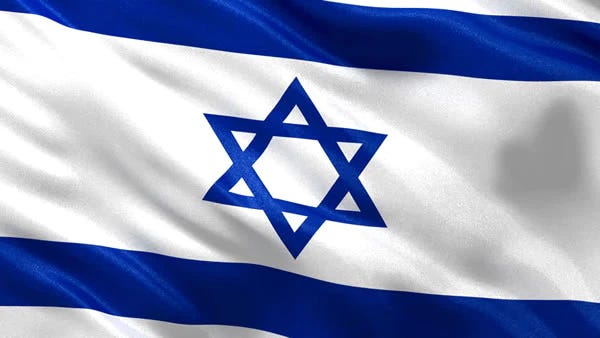
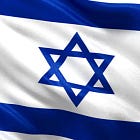
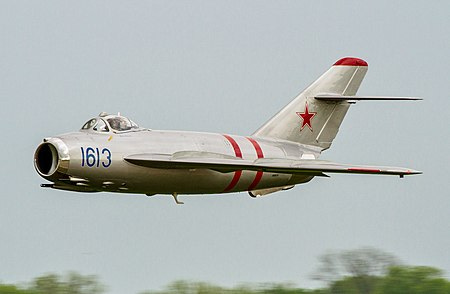

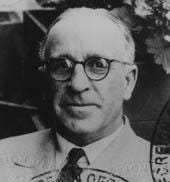
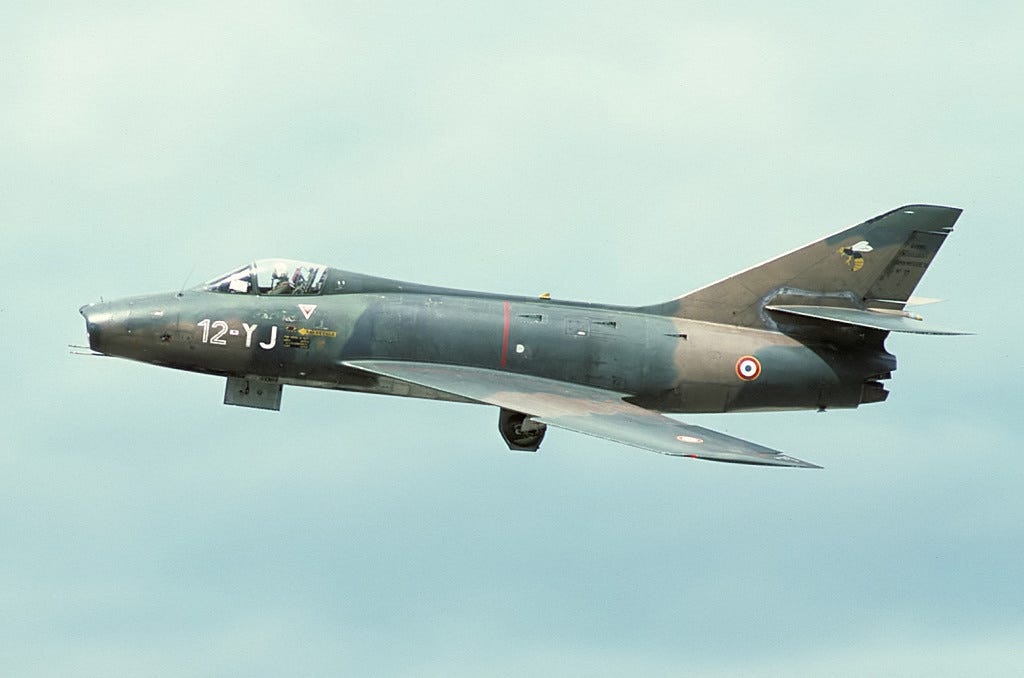



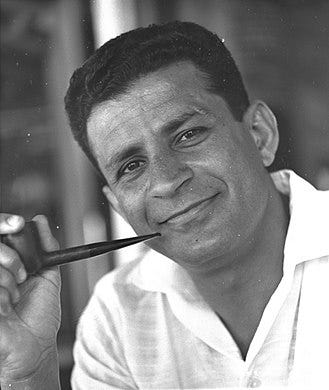
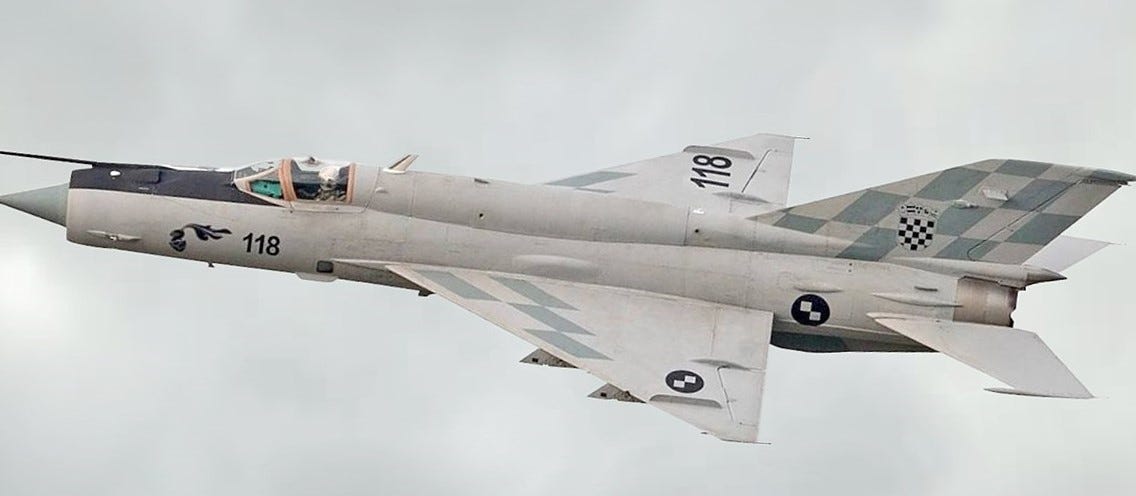
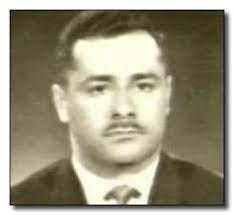
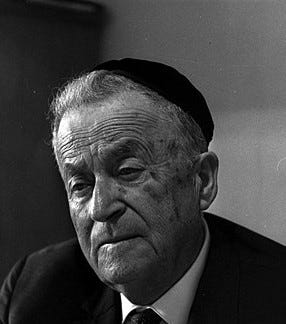
This is great - I like this “interlude” style between the major events because the smaller entries build on one another and make what could be an otherwise long read very interesting and keep my attention - great work here!